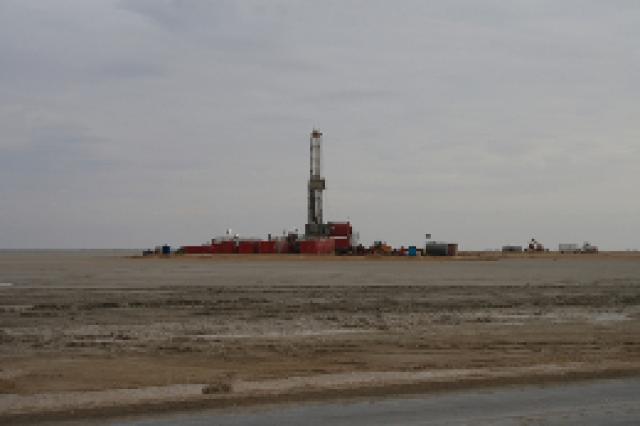
Learn more about Hart Energy Conferences
Get our latest conference schedules, updates and insights straight to your inbox.
Major oil companies, including BP, are stepping up investments in Oman to develop oil and gas as the country works to reverse declining production by deploying different extraction methods.
About 889,000 b/d of petroleum liquids, including 886,000 b/d of crude oil, were produced in Oman in 2011, and estimates are for Oman to produce 915,000 b/d in 2012, according to the US Energy Information Administration (EIA). The figures overall are up from 714,000 b/d in 2007 thanks to the success of international firms.
The country’s push for enhanced oil recovery is also aiding in the effort. The country’s Harweel Enhanced Oil Recovery (EOR) project is projected to add 30,000 b/d. Methods commonly used to boost oil production, according to the EIA, are miscible gas injection, steam (thermal) injection, and polymer flooding.
However, the country is short of natural gas. It exports liquefied natural gas, but the two facilities are operating at only 80% capacity. Oman also imports natural gas through the Dolphin Pipeline from Qatar.
Proven reserves of natural gas total 30 Tcf; however, Oman’s gas demand surpasses production due to increasing EOR applications, higher domestic use, and its export obligations. The Omani Ministry of Oil and Gas is seeking ways to up its reserves through E&P, the EIA said. The ministry’s plans include increasing reserves by 1 Tcf per year over the next 20 years, developing new gas fields to elevate production, and facilitating more EOR projects.
“BP is a pioneer in exploiting tight gas and is looking to apply its technology and expertise to develop one of the Middle East’s largest tight gas accumulations,” said Toby Odone, a spokesman for BP. “The Khazzan and Makarem fields have gas in place of around 100 Tcf.”
The development began with the signing of an agreement with the Oman government in 2007 for appraising and developing the Khazzan and Makarem gas fields in Block 61. Four years later, BP Oman reported achieving a milestone when first gas was delivered from the company’s extended well test project in the block to the government.
“This successful pilot project is helping to demonstrate the potential of a much larger scale development,” Odone said.
If plans proceed as hoped, BP’s full field development of the resource will involve drilling approximately 300 wells. The project’s first phase will target reserves of up to 7 Tcf, Odone said, with first gas delivered in 2016-17. Full field development would allow the company to achieve production of about 1.2 Bcf of gas per day. That’s equivalent to about a 33% increase in total domestic supply.
BP wouldn’t reveal how much money it plans to spend on the project, saying the size of the investment is still to be determined. But the company’s work is expected to help meet gas demands in Oman. Shaikh Ali bin Thabit Al Battashi, adviser to the Ministry of Oil and Gas, told The Times of Oman recently that “If everything goes well, BP’s gas exploration will help Oman, which is short of gas for meeting demand from a host of industrial projects,” to achieve self-sufficiency in clean energy.
In the meantime, BP’s appraisal drilling and testing program for the Khazzan project continues along with commercial discussions with the Ministry of Oil and Gas. Odone said the talks are progressing, and the company is optimistic that a commerciality declaration for the project will happen as scheduled during 2013.
BP isn’t the only major company with operations underway in Oman.
Occidental, the largest independent oil producer in Oman, has been in Oman for more than 30 years and reported producing 76,000 boe/d in 2011. The company has operations in the Mukhaizna, Safah, and Wadi Latham fields. Since Occidental took on operations of the Mukhaizna in 2005, the gross daily oil production has skyrocketed to about 124,000 boe/d, 16 times higher than 2005 figures, according to the company’s website.
Others major players in Oman include CNPC, KOGAS, Partex, Repsol, Shell, and Total.
Contact the author, Velda Addison, at vaddison@hartenergy.com.
Recommended Reading
President: Financial Debt for Mexico's Pemex Totaled $106.8B End of 2023
2024-02-21 - President Andres Manuel Lopez Obrador revealed the debt data in a chart from a presentation on Pemex at a government press conference.
Some Payne, But Mostly Gain for H&P in Q4 2023
2024-01-31 - Helmerich & Payne’s revenue grew internationally and in North America but declined in the Gulf of Mexico compared to the previous quarter.
Kimmeridge Fast Forwards on SilverBow with Takeover Bid
2024-03-13 - Investment firm Kimmeridge Energy Management, which first asked for additional SilverBow Resources board seats, has followed up with a buyout offer. A deal would make a nearly 1 Bcfe/d Eagle Ford pureplay.
Private Equity: Seeking ‘Scottie Pippen’ Plays, If Not Another Michael Jordan
2024-01-25 - The Permian’s Tier 1 acreage opportunities for startup E&Ps are dwindling. Investors are beginning to look elsewhere.
M4E Lithium Closes Funding for Brazilian Lithium Exploration
2024-03-15 - M4E’s financing package includes an equity investment, a royalty purchase and an option for a strategic offtake agreement.




